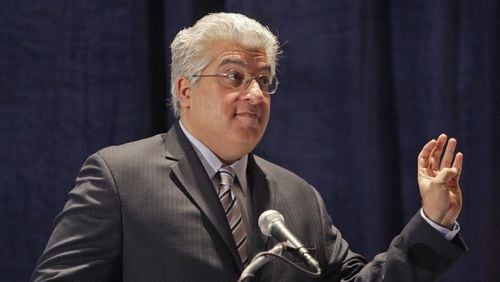The first year of the Trump administration will bring continued growth for the Georgia economy, but hiring will slow, according to a quarterly forecast released today.
The overall trajectory is positive, but there are threats to the housing sector, manufacturing and the thousands of jobs that move people and goods in and out of the country, said Rajeev Dhawan, director of the Georgia State University Economic Forecasting Center.
The state will add about 77,600 jobs this year, down from about 103,300 last year, according to the center’s latest forecast.
Georgia’s jobless rate, currently 5.4 percent, will dip slightly, averaging 5.2 percent for the year, according to the forecast.
Forces of growth still have momentum, Dhawan said: For example, business investment has picked up – and that adds needed fuel for hiring.
However, Georgia exports are already under pressure, due to a stronger dollar that makes products more expensive overseas. The new administration’s tough talk – or confrontation – on trade “could hinder growth in trade-related sectors,” Dhawan wrote.
Georgia exported $35.7 billion in goods last year, down 7 percent from 2015.
An estimated 387,000 jobs in the state are directly linked to exports. More than three times that number are indirectly supported by exports, according to the U.S. Global Leadership Coalition, a network of businesses and non-profit organizations.
The president’s rhetoric and threats about trade have gotten the attention of the Federal Reserve, which had been planning to raise basic interest rates a number of times through the year.
Anything that adds costs – like tariffs or a stronger dollar – will make imports more expensive and threaten to spark inflation. Moreover, higher rates dampen the housing market by trimming the purchasing power of potential buyers.
With all that in mind, the Fed may be more cautious about raising rates, Dhawan said.
“Expect one rate increase this March before the trade ruckus breaks loose,” Dhawan wrote in the forecast. After that, “the Fed will stand pat until the storm blows over. Then they will renew their hikes.”
About the Author







